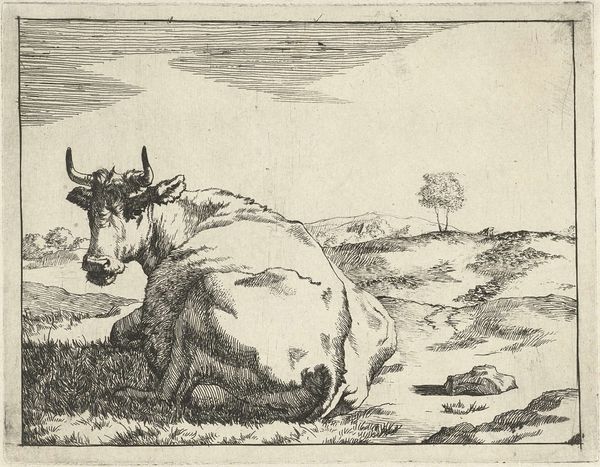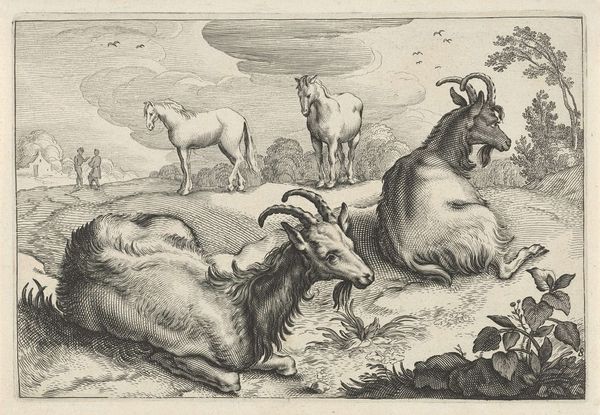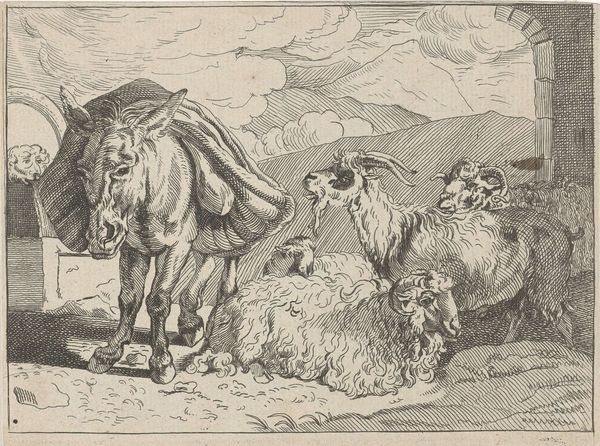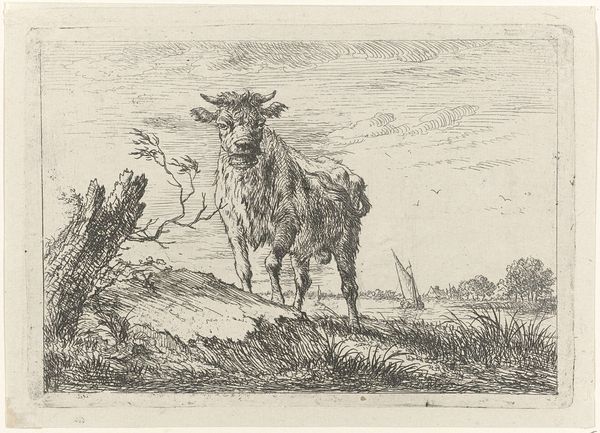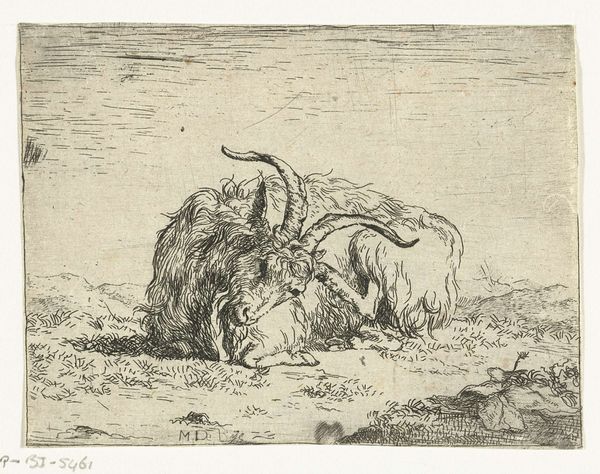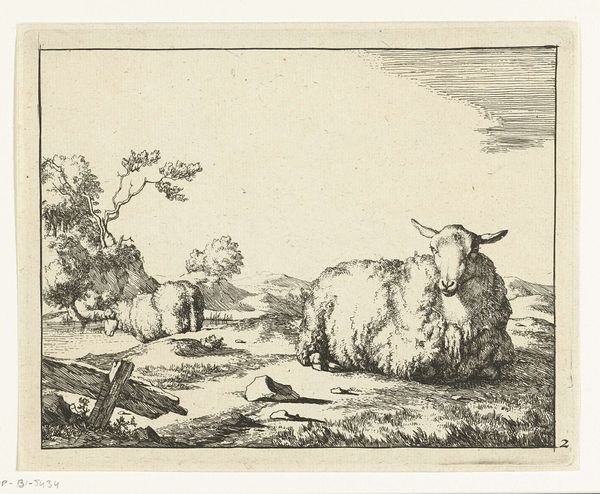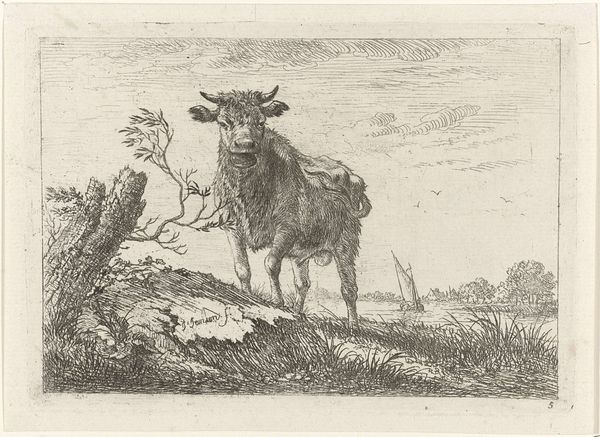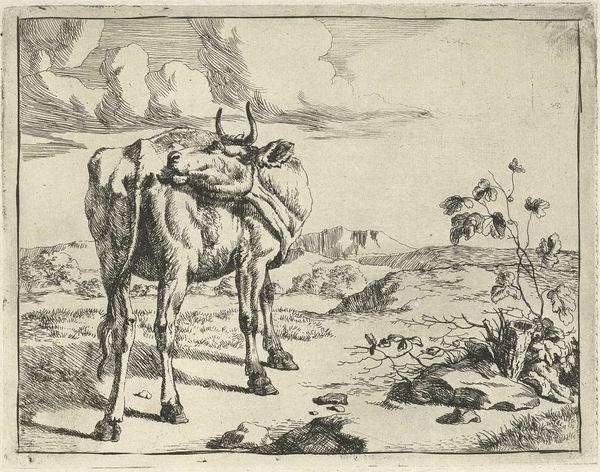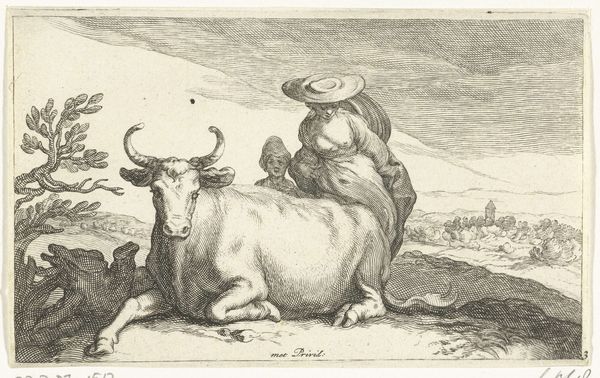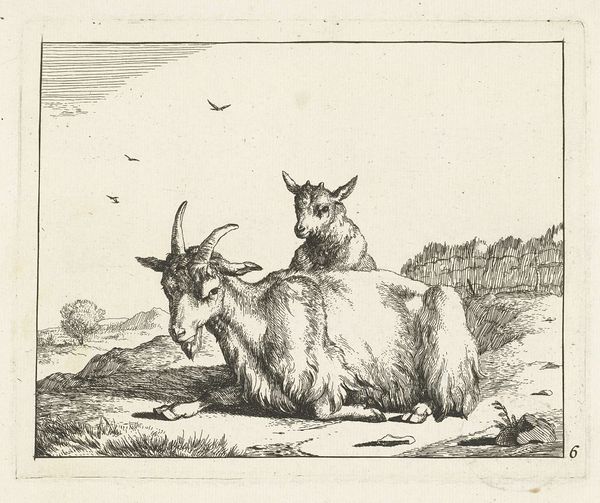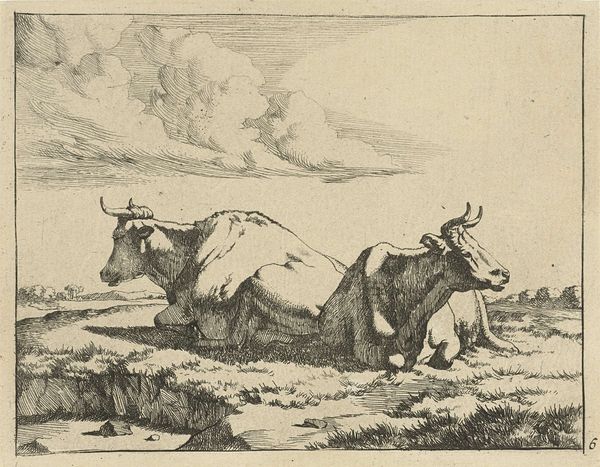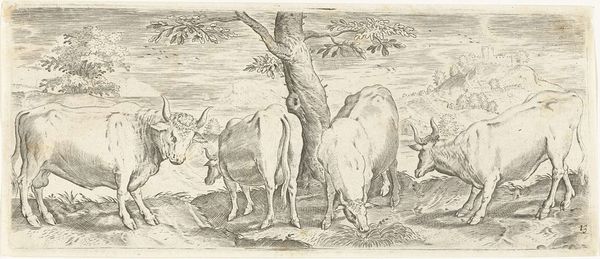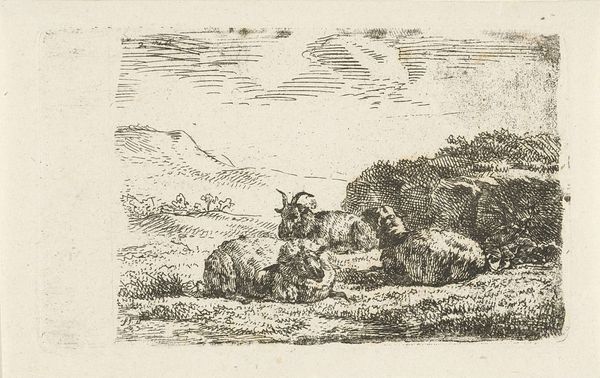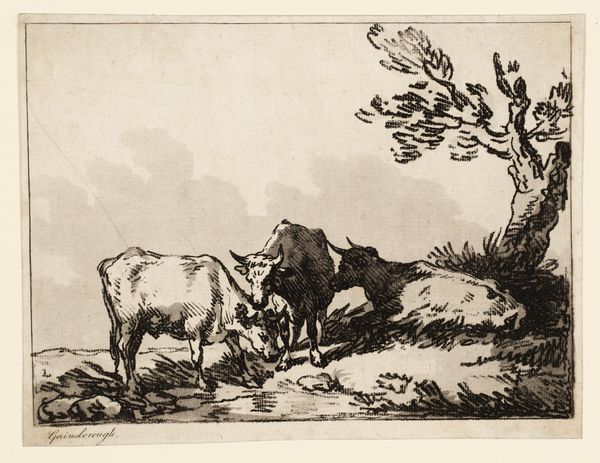
drawing, print, etching, ink
#
drawing
#
animal
# print
#
etching
#
landscape
#
ink
#
genre-painting
#
realism
Dimensions: height 117 mm, width 148 mm
Copyright: Rijks Museum: Open Domain
Curator: This is "Liggende koe," or "Reclining Cow," an etching in ink on paper, dating from approximately 1657 to 1761, attributed to Marcus de Bye and housed here at the Rijksmuseum. Editor: It strikes me as profoundly pastoral, yet melancholic. The cow is so still, almost like a landform herself, under a sky heavy with implied weather. Curator: I’m drawn to the process. The etching captures texture through its layered lines, reflecting both the rough materiality of the cow's hide and the rough-hewn shed structure in the background. Consider the laborious work and the materials involved in producing multiple impressions of this scene. Editor: Absolutely. Cows have long stood as symbols of domesticity, fertility, and the provision of sustenance, appearing in mythologies and art across centuries. This recumbent cow seems burdened, yet accepting of its role within the cyclical processes of farm life. The image exudes the weight of history. Curator: And what about the landscape in which the cow is situated? Observe how the composition draws our attention to the social context of the print, the relationship between animal and human labor within rural society, a subject that gained popularity during the 17th century with the rise of Dutch realism. Editor: The symbolism continues there, I think. The slightly dilapidated shed perhaps suggesting the transience and precariousness of human endeavor against the backdrop of nature’s enduring presence. Note, too, the figure above the doorway. Is he perhaps the one who tends to the animal and the shed, yet feels isolated under those roiling clouds? Curator: An excellent reading! One cannot divorce artistic intent from the realities of agrarian life during this period. There was, after all, a market for these images, representing idealized—or perhaps scrutinized—visions of labor and the natural world, sold as commodities. Editor: Thinking about the cow, that shed, that solitary figure: It leaves one with a lasting sense of ruminative reflection. It speaks volumes about our relationship with the land. Curator: Precisely. It provides a view into how resources, from livestock to landscapes, were regarded and transformed into both sustenance and artistic expression.
Comments
No comments
Be the first to comment and join the conversation on the ultimate creative platform.
